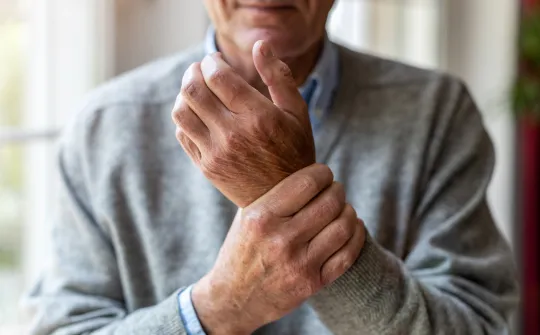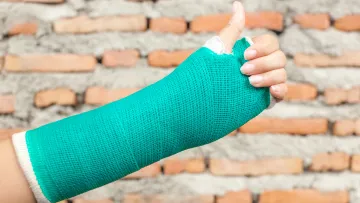
Rheumatoid Arthritis
Diagnose and Treat Your Rheumatoid Arthritis Pain
Do you experience aching in more than one joint? Are your joints stiff and swollen? It could be rheumatoid arthritis, a chronic inflammatory disease that affects the joints and causes painful swelling and stiffness.
Our doctors at Orthopaedic Specialists of Austin in Austin, TX, can diagnose and treat pain caused by rheumatoid arthritis.

What Is Rheumatoid Arthritis?
A Closer Look at a Debilitating Autoimmune Disease
Unlike arthritis caused by the natural wearing down of cartilage, rheumatoid arthritis is a condition in which the body's immune system attacks the soft tissue of your joints throughout your body, causing them to become inflamed and painful. Unlike other types of arthritis, RA is symmetrical (meaning it occurs in the same joints on both sides of the body), and typically affects the wrists, elbows, ankles, and knees.
What is the Cause of Rheumatoid Arthritis?
Rheumatoid arthritis is the result of an improper immune response in the body. The exact cause of rheumatoid arthritis is unknown, but some factors can put you at a greater risk of developing the disease.

Rheumatoid Arthritis versus Osteoarthritis
What is the Difference? Arthritis is the umbrella term that encompasses the many types of the disease. However, there are several differences between the types of arthritis.
Rheumatoid Arthritis
Osteoarthritis
What Puts Me at Risk of Developing Rheumatoid Arthritis?
Diagnosing Rheumatoid Arthritis
You don't need to see a rheumatologist to diagnose and treat your rheumatoid arthritis. Our joint specialists in Austin, TX, are experienced at providing effective treatment for our patients suffering from the disease. Diagnosis requires:
Physical Examination
We will go over your symptoms and family history to determine if you are showing the signs of rheumatoid arthritis. We will also check your joints for swelling, redness, and heat.
X-rays
X-rays will be taken of your affected joints to see the extent of the disease. They may also be taken through your treatment to monitor the disease's progression.
Blood Tests
Blood tests will be taken to check for your signs of rheumatoid arthritis, including the rheumatoid factor. Rheumatoid factors are the proteins that attack the healthy tissue in your joints, causing the symptoms of arthritis.
The Treatment of Rheumatoid Arthritis
There is no need to see a rheumatologist for your joint pain. Our board-certified doctors specialize in joint complications and are able to design a personalized treatment plan to help you manage your symptoms in accordance with your daily needs. Solutions include:
How Can I Manage My Symptoms?
The best way to manage your symptoms of rheumatoid arthritis is to follow your doctor or therapist's care instructions. In addition to their treatment plan, there are other lifestyle changes and home remedies you can implement to ease your pain:









